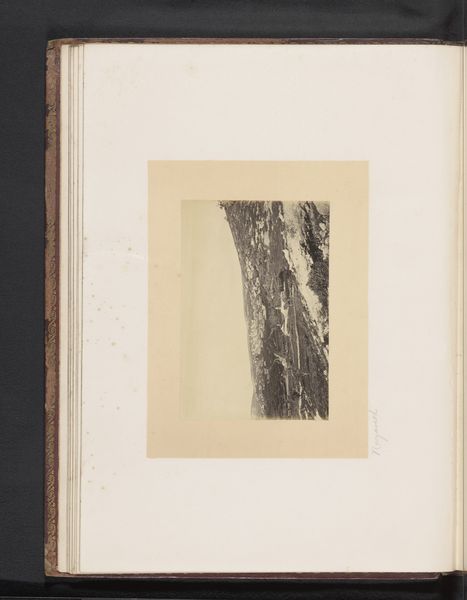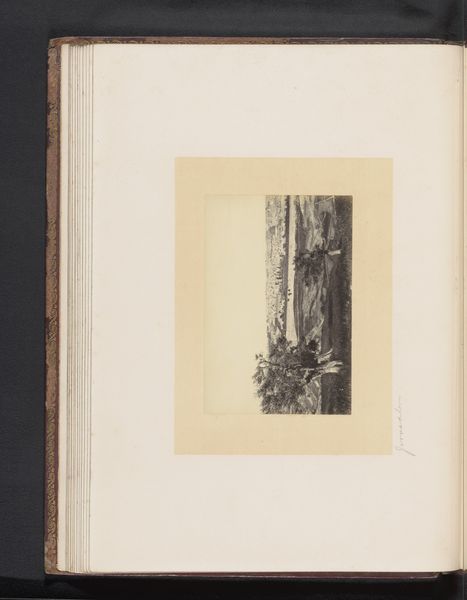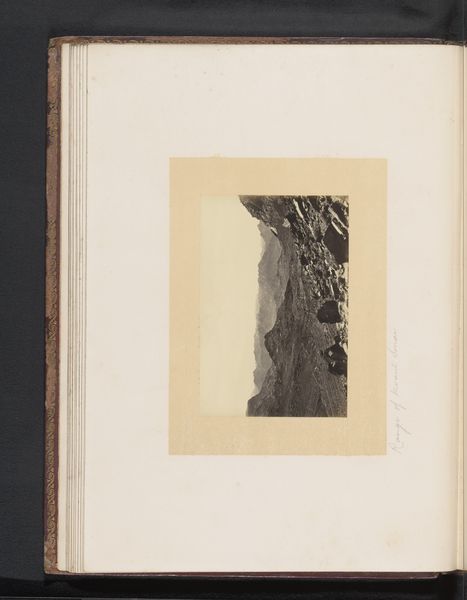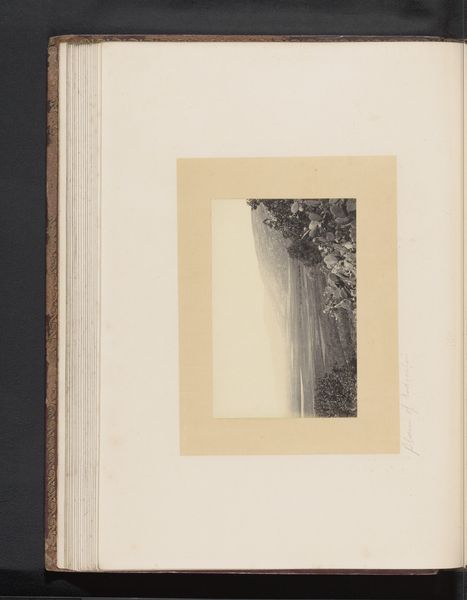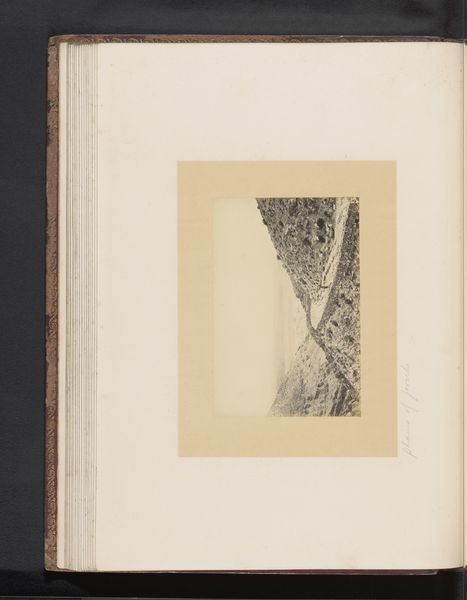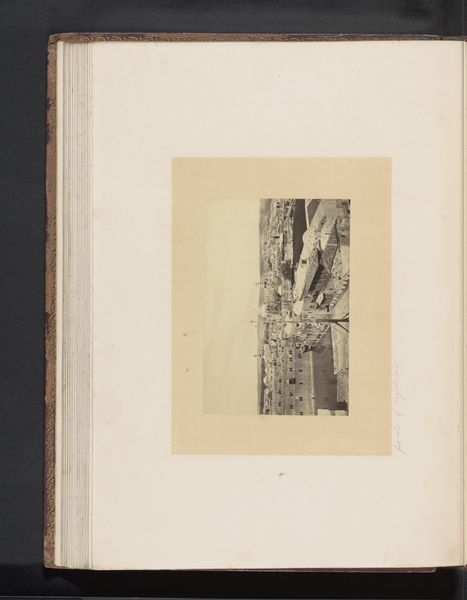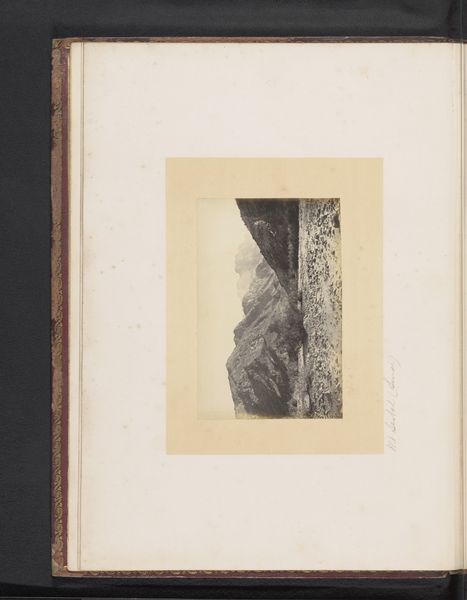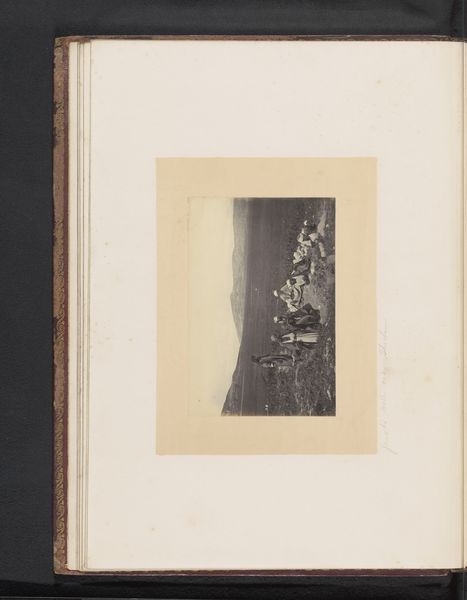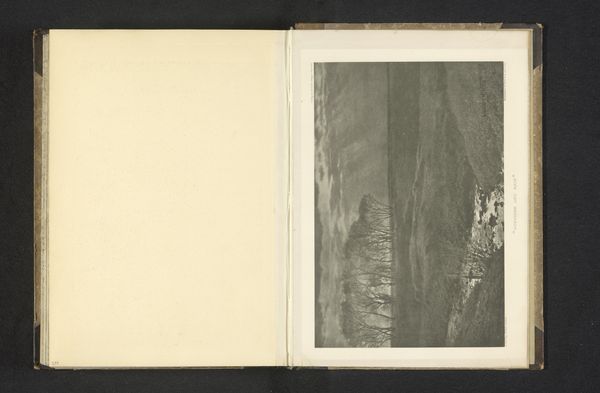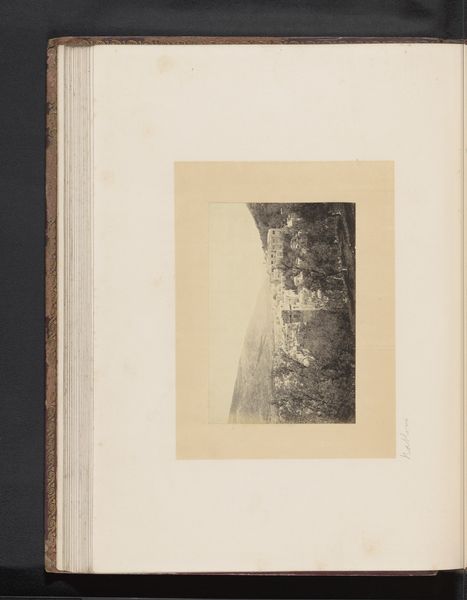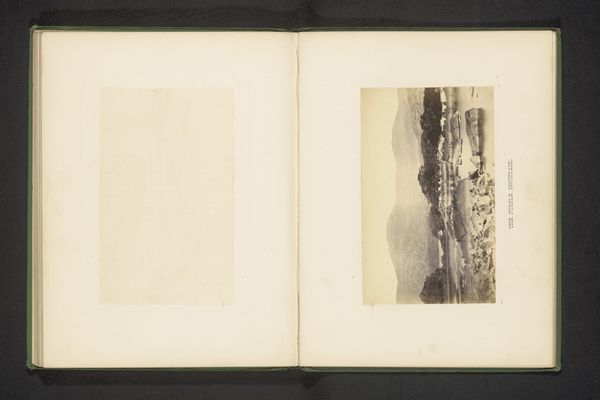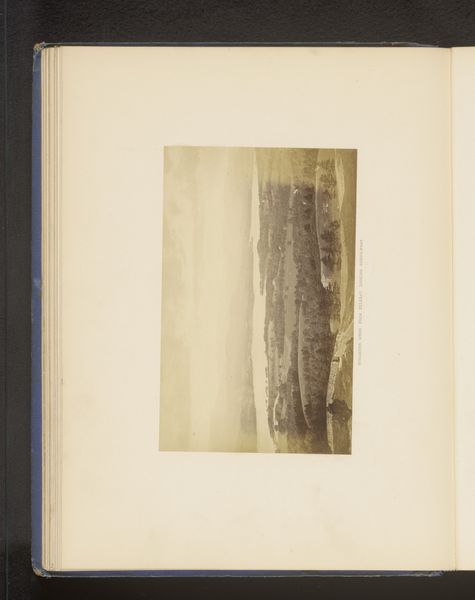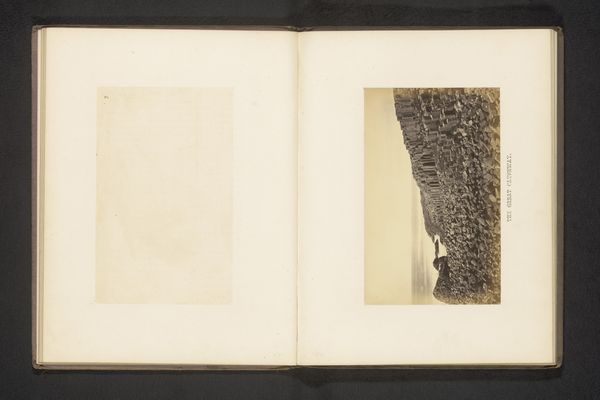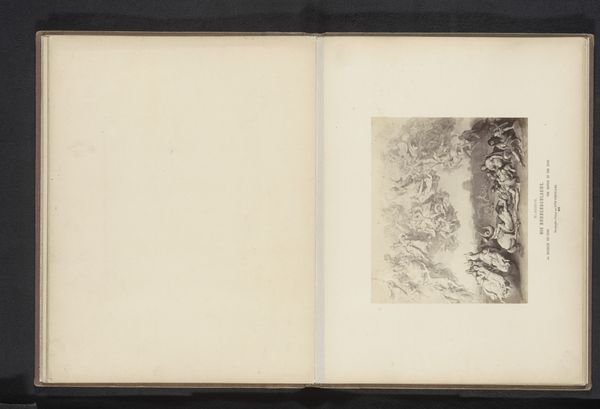
print, photography, albumen-print
# print
#
greek-and-roman-art
#
landscape
#
photography
#
orientalism
#
albumen-print
Dimensions: height 102 mm, width 145 mm
Copyright: Rijks Museum: Open Domain
Curator: Welcome. We’re looking at Francis Frith’s "Gezicht op de Akropolis van Athene," taken before 1875. It's an albumen print, part of the Rijksmuseum's collection. Editor: There's a stark, desolate quality here. The high contrast lends an air of remoteness, almost otherworldly. And is it just me, or does the book format amplify the feeling of viewing something precious yet inaccessible? Curator: It's that very tension between documentation and art that interests me. Albumen prints, favored for their fine detail, required a complex layering of chemistry and light. Frith, a successful commercial photographer, capitalized on both aesthetic appeal and marketability of exotic scenes. Think about the labor, the materials, the sheer scale of his operation to produce these prints and then, what they sold for... Editor: The “exotic scene” here cannot be ignored. This piece embodies orientalism's complex narrative – a Western gaze shaping perceptions of "the East." The Parthenon, an icon of Western civilization, photographed by a British photographer, presented to European audiences...Who does it serve? This act of framing asserts a kind of colonial dominion through the simple act of image-making, right? Curator: Precisely, although Frith, as a commercial enterprise, offered these prints widely. We should note, that Frith actually extensively traveled to, photographed, and employed people of the region throughout production, including later preservation work. This challenges straightforward "colonial dominion" assertions in artmaking that ignores nuances of process and worker relationships. The sepia tones lend the print, even in its time, a kind of antique feel. The choice to evoke timelessness surely enhanced sales. Editor: Absolutely. Think of the original Greek inhabitants. They see their most sacred, symbolic space captured not by their hands, nor in their interest or expression, but mediated by this colonial lens that’s commodified for Western consumption. It begs questions of authenticity and cultural ownership. The image-making decisions have everything to do with that history of control, don’t they? Curator: I'd push back a little, asking who is controlling it and where the economic fruits flow. But there’s clear control in how Frith curated these views and prints, to whose sensibilities they catered to in the production chain, all contributing to how we understand and recontextualize this piece today. Editor: Thank you, this piece is something that encourages critical reflection not only on artistic expression but on global power dynamics. Curator: Agreed. The layers within are richer for grappling with the production details and their ramifications on today's conversations.
Comments
No comments
Be the first to comment and join the conversation on the ultimate creative platform.
